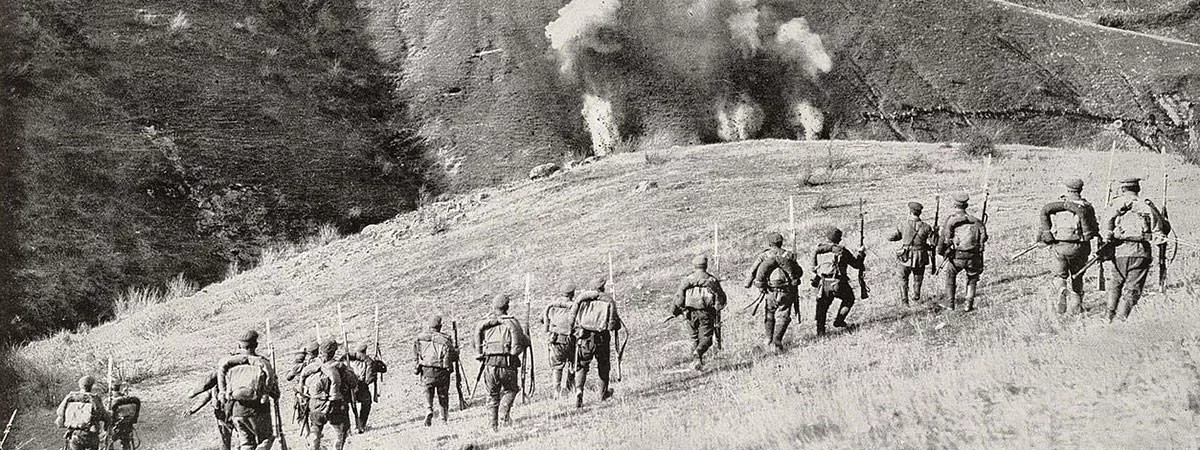Fought between July 28, 1914 and November 11, 1918, World War I was a global conflict between the Central Powers and the Allies. The Balkans refer to the peninsula in Eastern Europe sandwiched between four seas: the Black Sea, the Mediterranean, the Adriatic and the Aegean. This strategic area on the continent was home to newly formed nations like Greece, Serbia, Bulgaria and Macedonia, which were surrounded by large empires of Russia, Austria Hungary and the Ottomans. Serbian nationalism in the Balkans ultimately became the reason for the outbreak of WW1 in 1914 and opened up the region for more direct conflicts. The Balkan theater of WW1 was fought between the Central Powers, represented by Austria-Hungary, Bulgaria, Germany and the Ottoman Empire on one side; and the Allies, represented by France, Montenegro, Russia, Serbia and the United Kingdom on the other side. The Balkan Front may be divided into the Serbian-Montenegrin Campaign, the Macedonian Front and the Romanian Campaign. Here are the major battles and events of World War I which took place at the Balkan Peninsula including their dates, place and the nations involved.
SERBIAN-MONTENEGRIN CAMPAIGN
Battle of Cer
Date: August 16 – 20, 1914
The very first Austro-Hungarian invasion of Serbia began with troops entering Serbia via Loznica town and crossing the rivers to converge on Valjevo. Fighting erupted on the slopes of the Cer Mountain and, after 4 days, the Austro-Hungarian armies had to flee across Drina River giving the Serbians a handsome victory. The Austro-Hungarians suffered 37,000 casualties and the Serbians half as many.
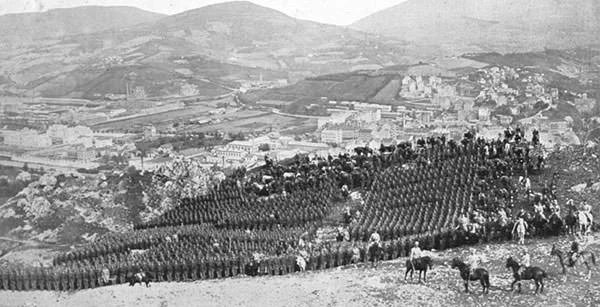
Battle of Drina
Date: September 6 – October 4, 1914
Retreating back into Bosnia and Syrmia after the defeat at Cer, Austro-Hungarian General Oskar Potiorek advocated that the best way to stop a Serbian offensive in Bosnia was to launch another invasion into Serbia. This forced the Serbs to recall their troops to defend their much smaller homeland. A major offensive was launched over the Drina River at the western Serbian border, resulting in numerous skirmishes most notably at Gučevo and Mačkov Kamen. The Serbian army retreated in early October giving Austria-Hungary a foothold in Serbia and control over Serbian capital Belgrade.
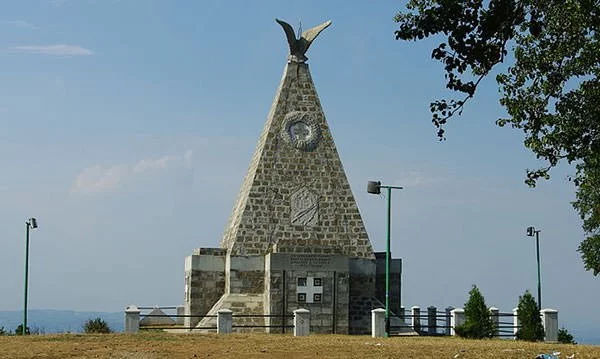
Battle of Kolubara
Date: November 16 – December 16, 1914
Having forced the Serbians to undertake a series of retreats, the Austro-Hungarians under the command of Oskar Potiorek reached the Kolubara River during their third invasion of Serbia. However on December 2, the Serbs launched a surprise counter offensive retaking strategic towns of Valjevo and Užice on December 8, and finally their capital Belgrade by December 16. Both sides suffered 20,000 casualties. However, the defeat humiliated Austria-Hungary, which had hoped to occupy a much smaller Serbia by the end of 1914.

Central Powers invade Serbia
Date: October 7 – December 4, 1915
Almost a year after Austria Hungary’s failed invasion of Serbia, the Central Powers chalked out another plan to capture Serbia. The Germans were keen on a rail route to Istanbul via Serbia and the Austro-Hungarians wanted relief after Italy opened up a new front against them joining the Allies. On October 7, 1915 under the command of Field Marshal August von Mackensen, the Austro-Hungarians and Germans crossed the Drina and Sava rivers beginning the invasion of Serbia. A week later, the new ally of the Central Powers, Bulgaria, launched a fresh attack near River Morava. The Bulgarian First Army penetrated up to 90 km in Serbian territory, by the beginning of November, 1915. The Bulgarian Second Army on the other hand defeated the Serbians at the Battle of Ovche Pole and the last desperate attempt of the Serbs failed in the Battle of Kosovo.
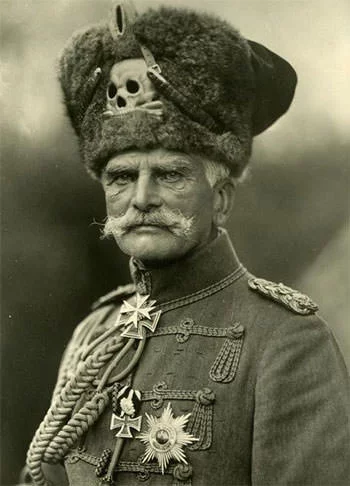
Serbian Army’s retreat through Albania
Date: November 25, 1915 – February 1916
As the Serbians were completely surrounded and defeated by November 1915, Field Marshal Radomir Putnik ordered a full retreat of the Serbian military south and west through Allied Kingdom of Montenegro and into neutral Principality of Albania. The retreat began in terrible weather conditions and the Central Powers stopped their pursuit past the Albanian mountains. Hundreds of thousands in the Serbian Army fled their homeland and thus managed to evade capture. However, many of them would perish to hunger, disease, thirst and hypothermia; and at the hands of Albanian tribal bands seeking revenge for the Balkan Wars. About 150,000 would reach the coast of the Adriatic Sea and embark on Allied transport ships that carried them to various Greek islands by February of 1916.
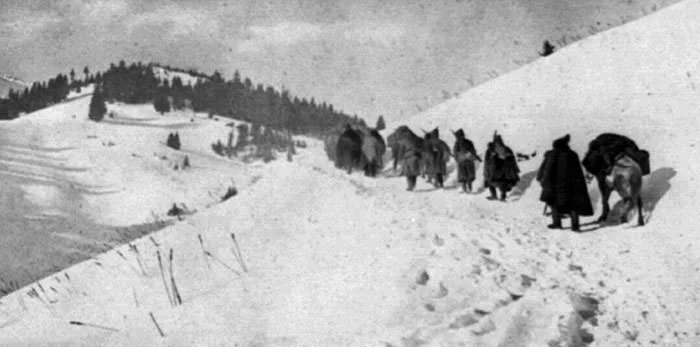
Invasion of Montenegro
Date: January 5 – 17, 1916
The Austro-Hungarian Army launched an attack on Serbian ally Montenegro in early January. The small Montenegrin Army managed to hold the Austro-Hungarian forces temporarily in the Battle of Mojkovac. This was of great help to the withdrawing Serbian Army. However, facing impossible odds, Montenegro was eventually defeated and surrendered on 25th January.
MACEDONIAN FRONT
Battle of Krivolak
Date: October 17 – November 21, 1915
In early October of 1915, parts of the Allied Army of the Orient landed in Salonika advancing north to support the retiring Serbian units in Kosovo. By 20th October, the French Infantry Divisions 156 and 57 spread from Krivolak to approach the Bulgarian border in southern Serbia. A day later, Bulgarian troops attacked the French-held positions near the Strumica rail station. Skirmishes continued for close to a month. However, as the Serbian Army collapsed in the north, French General Sarrail was ordered to gather together as much of the Serbian Army as he could, and retreat to Salonika.
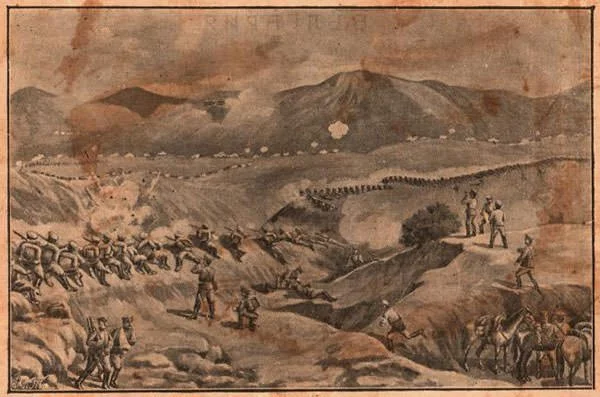
Battle of Kosturino
Date: December 6 – 12, 1915
On December 6, Bulgarian troops attacked the French and British-held trenches in Kosturino, Serbia (now Macedonia) handing the Allies another defeat after Krivolak. The defeat led to the complete withdrawal of Allied forces from Serbia, thus enabling the Central Powers to build the Berlin to Constantinople (Istanbul) rail line.
First Battle of Doiran
Date: August 9 – 18, 1916
In August 1916, French and British divisions launched an offensive against defensive positions held by the Bulgarian Second Thracian Infantry Division at Lake Doiran. All the five attacks were repulsed and the Allies were forced to retreat to their original positions with heavy casualties.
Monastir Offensive
Date: September 12 – December 11, 1916
By September 1916, the Allies had a substantial force of close to 400,000 men, for operations on the Macedonian Front. These included the rested and redeployed 6 Serbian divisions along with British, French, Italian and the Russians. With the aim of forcing the capitulation of Bulgaria and relieving the pressure on Romania, the Allies launched their offensive on 12th September with a powerful two-day artillery barrage. The opening battle at Malka Nidzhe sector lasted three days and ended in an Allied victory with the Bulgarians retreating to new positions around Lerin. Lerin was then successfully invaded by the French on September 23. Adding to that, Kaymakchalan was captured by the Serbians on 30th September after 18 days of intense fighting.

The Bulgarians were stretched and demanded reinforcements. However, few arrived from Germany and the Ottoman Empire. The two month long Battle of Cerna Bend began in October where both sides took heavy casualties and the Bulgarians decided to retreat from Monastir by 18th November. They then established a new defensive position on the Chervena Stena, which they managed to hold firm despite Allied efforts. On December 11, 1916, as the winter set in, French General Joseph Joffre finally called off the offensive.
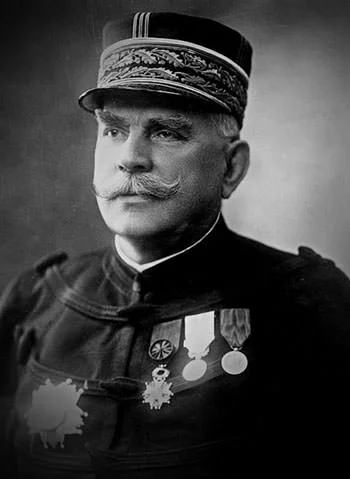
Second Battle of Doiran
Date: April 22 – May 9, 1917
The British launched an attack on Bulgarian defensive positions starting 22nd April, 1917, with long artillery barrages exhuming 100,000 shells in the first 4 days. The Bulgarians responded with fire from their own batteries between Vardar and Doiran. The battle ended on 9th May, when the British abandoned all attacks due to heavy casualties numbering 12,000. The Bulgarian losses numbered 2000.
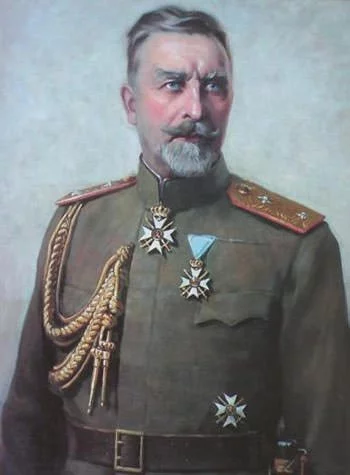
Second Battle of Cerna Bend
Date: May 5 – 9, 1917
A part of the Allied Spring Offensive of 1917, the battle was an important military engagement between the Central and Allied Powers, aimed to break the stalemate on the Macedonian front. Despite their numerical advantage, the Allies failed yet again to break the formidable Bulgarian and German defense of their positions in the loop of the river Cerna.
Vardar Offensive
Date: September 15 – 29, 1918
The Germans found it difficult to hold the Western Front against the Allies in the summer of 1918. Thus, their troops were hastily withdrawn and transferred from Bulgaria. This left the Bulgarians considerably weakened and invited a major Allied offensive against them. The Allies now bolstered by fresh Greek troops and led by French General Franchet d’Esperey, launched the Vardar Offensive.
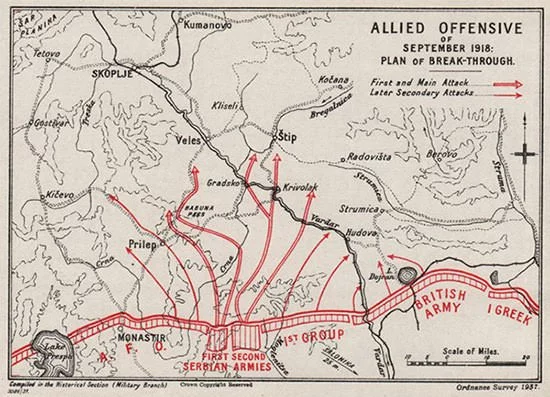
On September 15, Serbian, French and Greek troops attacked the Bulgarian-held trenches in Dobro Pole, forcing the Bulgarians to flee. On September 18, a second Allied formation attacked the Bulgarian positions in the vicinity of Lake Doiran. The Bulgarian forces soon capitulated but managed to stop the Allies at Doiran. They thus avoided the capture of Bulgarian lands. However the development of the anti-monarchist Radomir Rebellion in Bulgaria, forced Tsar Ferdinand I of Bulgaria to sign the Armistice of Salonica to end hostilities against the Allies and to abdicate in favor of his son Boris III.
ROMANIAN CAMPAIGN
Romania was an ally of Austria-Hungary before WW1 and was obliged by a secret treaty to go to war in case Austria Hungary was attacked. However Romania, like Italy, stayed neutral when war broke out in 1914 citing that Austria Hungary was the aggressor. In August 1916, guided by their interest in taking Transylvania from Hungary and accessing the recent losses of the enemy, Romania switched sides to join the Allies and declared war on the Central Powers.
Battle of Transylvania
Date: August 27 – October 25, 1916
With the aim of seizing the province of Transylvania and knocking Austria Hungary out of the war, three Romanian armies invaded Austria Hungary through the Carpathian passes. Romania had initial success and advanced almost 100 km in the first 29 days of the offensive. However, the Central Powers then launched a counterattack beginning in mid-September. Under the command of Erich von Falkenhayn, the Central powers routed the Romanians, forcing them to retreat to pre-war positions in the Carpathian Mountains by the end of October.
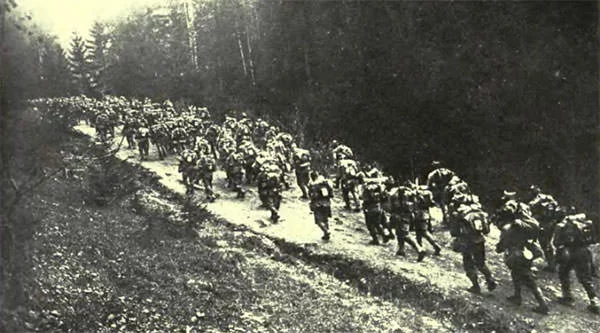
Battle of Turtucaia and Dobrich
Date: September 2 – 7, 1916
The Bulgarian Third Army crossed the Romanian border along its entire length on 2nd September, with its left wing enclosing the fortress of Tutrakan. The battle lasted for 5 days ending with the surrender of the Romanian defenders. Between 5 to 7 September, the Bulgarian Third Army also managed to take Southern Dobruja, pushing the larger Russian, Romanian and Serbian forces further north.
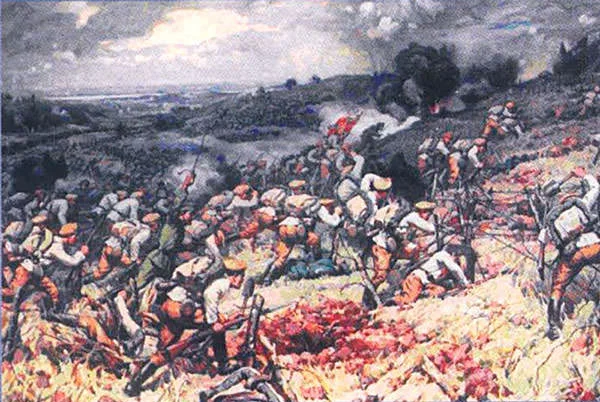
First and Second Battle of Cobadin
Date: September – October, 1916
The Bulgarian Third Army engaged the Romanian-Russian Army of the Dobruja from September 17 – 19. Unable to get a breakthrough, the Central Powers held their offensive and assumed defensive positions till the Second Battle of Cobadin in mid-October. This battle was a decisive victory for the Central Powers with the occupation of the strategic port of Constanţa.
Battle of Bucharest
Date: November – December, 1916
By the end of November 1916, the Romanians had their backs to the wall defending their nation in the face of invading German, Bulgarian and Austro-Hungarian armies. General Mackensen led a mainly Bulgarian force from the south, while General Falkenhayn commanded an invasion force advancing from Transylvania in the west. The Romanians counterattacked Machensen’s forces with some success. This included one of the most daring actions of the Romanian Armed Forces in WW1, known as the Prunaru Charge. The idea was to defeat Machensen’s force before Falkenhayn arrived. However, the plan collapsed soon and the Romanians had to retreat to avoid encirclement. Bucharest was captured on 19 December by the Central Powers and the Romanian and Russian forces’ retreated to Moldavia. This was barely four months since Romania’s rash decision to enter the war.
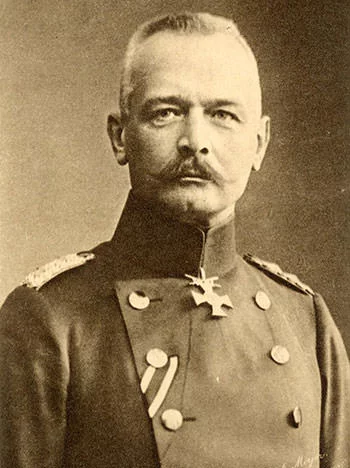
Battle of Mărăști and Mărăşeşti
Date: July – August, 1917
On 22nd July, 1917, the Romanians, with the support of Russia, launched an offensive in the Soveja Basin, which would be later called the Battle of Mărăști. The aim was to encircle and destroy the German 9th Army. However, after initial success, a counter-offensive by the Central Powers in Galicia stopped the Romanian-Russian advance. This battle was followed by another important engagement in the Battle of Mărăşeşti, where the Romanians distinguished themselves and managed to keep the northeastern region of their country free from occupation.
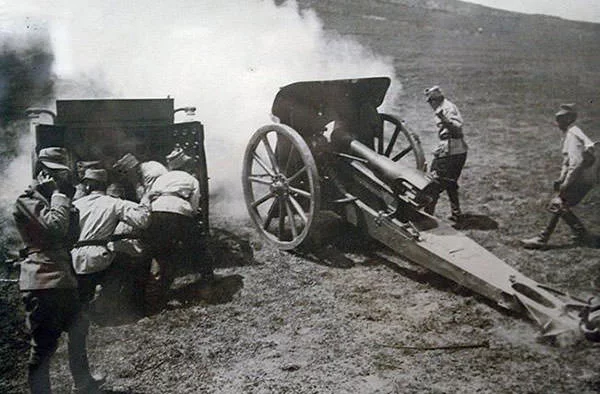
Treaty of Bucharest
Date: May 7, 1918
In May 1918, Russia signed the Treaty of Brest-Litovsk and withdrew from WW1. After the German advance in the Ukraine, Romania was surrounded by the Central Powers forces and had no other choice but to sue for peace. The Treaty of Bucharest was signed between Romania and the Central Powers on May 7, 1918. However as Germany lost the war later in the same year, it was forced to renounce all the benefits provided by the Treaty of Bucharest by the Treaty of Versailles.

